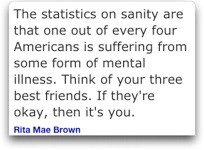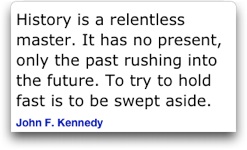

Some Pitfalls of using Inferential Data to Predict Caller Behavior
Sunday, September 14, 2014
Statistical Inference
I've never visited a restaurant and ordered 'The Usual'. I enjoy variety in my dining experience. I've never had a waiter bring me what, based on my demographic and dining profile, I should order.
Statistics predict how groups are likely to behave, and are quite useless in predicting an individual's behavior.
Statistics are good for ordering a weeks worth of Prime Rib, but not very good at predicting that I will order Prime Rib on a particular night.
Historical Inference
I like it when a waiter remembers my name, my last order, the last time I visited, or that I recently got married. That's makes me feel valued.
However, that doesn't make up for them forgetting my order,
delivering something I didn't order, taking forever to deliver the food or check, or delivering something that I expressly didn't want... "Pasta Carbonara WITHOUT the peas please."
Historical trends are useful, but don't let them distract you from present realities...like the lamp post you're about to walk into.
Value Inferences
When being seated at a restaurant, if other tables are available, I don't appreciate being given a table by the restrooms or bus-station. I may not be a regular 'high value' customer at the restaurant, but if I'm treated like one, I'm more likely become one.
On the other hand, bad service given to 'low value', infrequent visitors, is likely to result in negative reviews, reducing the likelihood of adding new customers.
If you want your callers to have a better experience, to remain loyal, and to recommend your business to others, remember that Big Data and inferential statistics can't predict the needs of an individual, or the outcome of an interaction between individuals. Those waters must be mapped and negotiated in real-time by your front-line personnel.
Call Intelligence - Better by Design
Call Intelligence Inc. is a Transactional Intelligence and Design Consultancy with over 24 years helping our clients to better understand and improve the outcomes of interactions with their prospects and customers.
Our analyses allow us to map, correlate and prioritize thousands of possible relationships between marketing programs, call handling systems, calls, callers, call components, concerns, agents, competition, etc...and outcomes.


